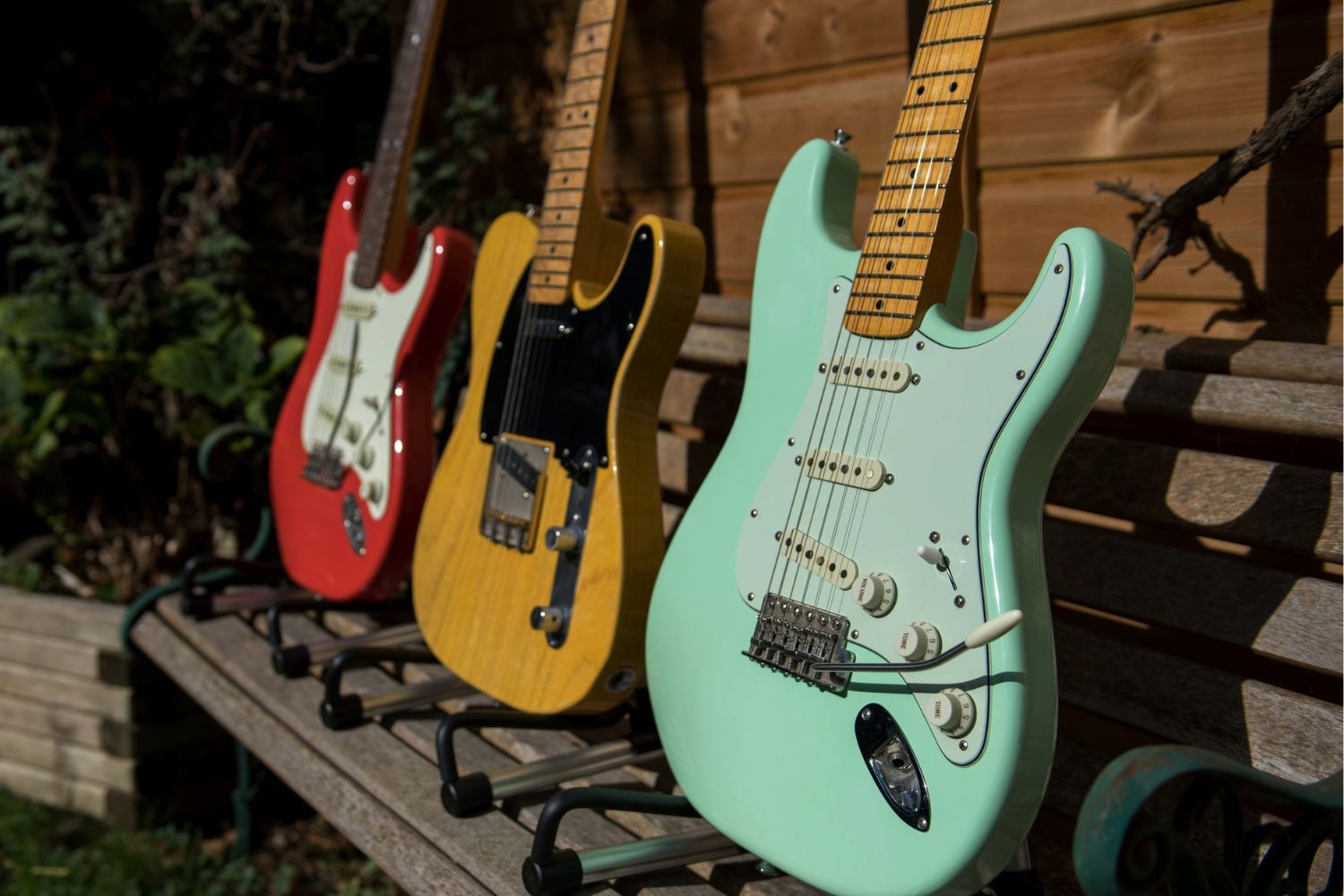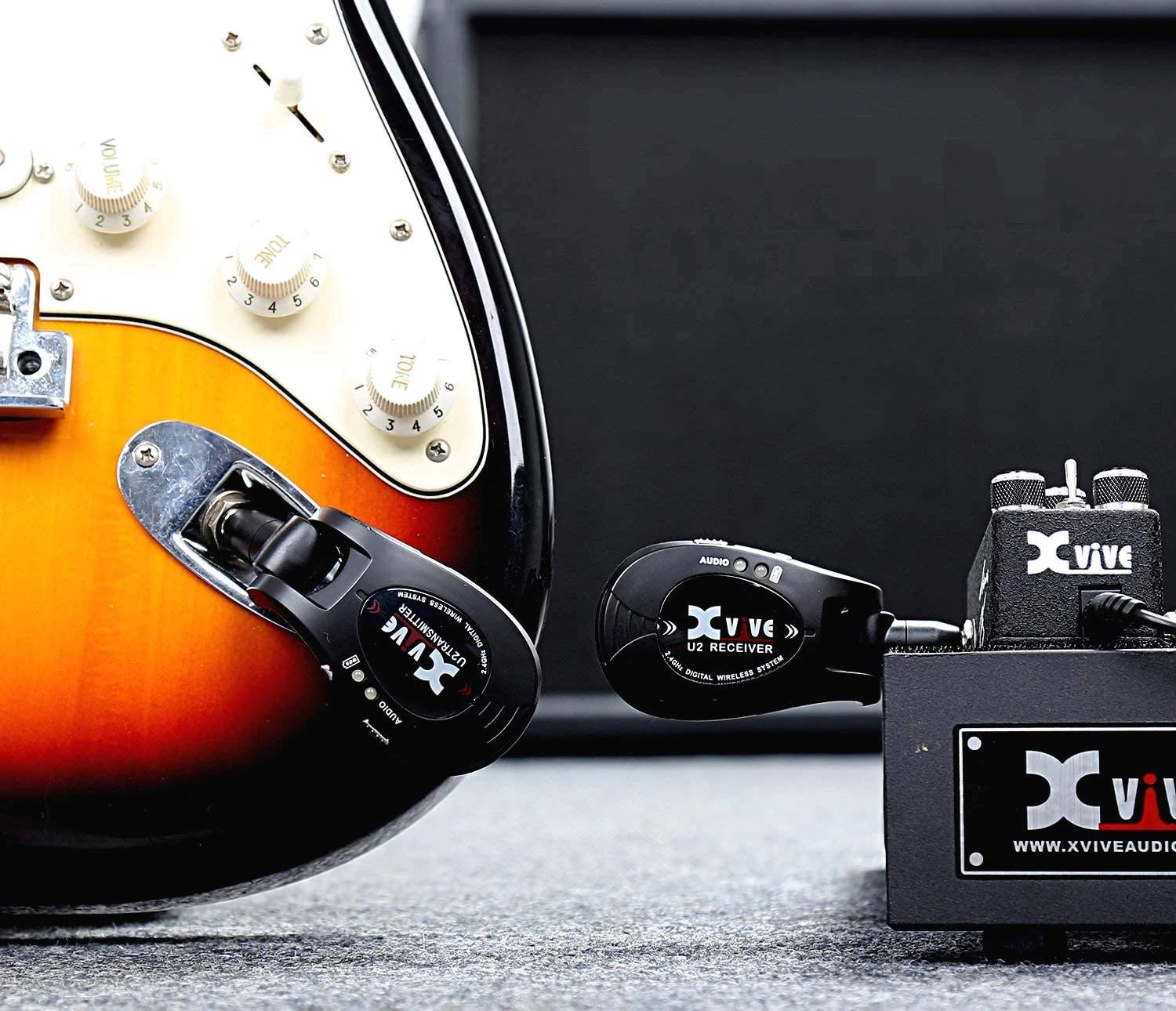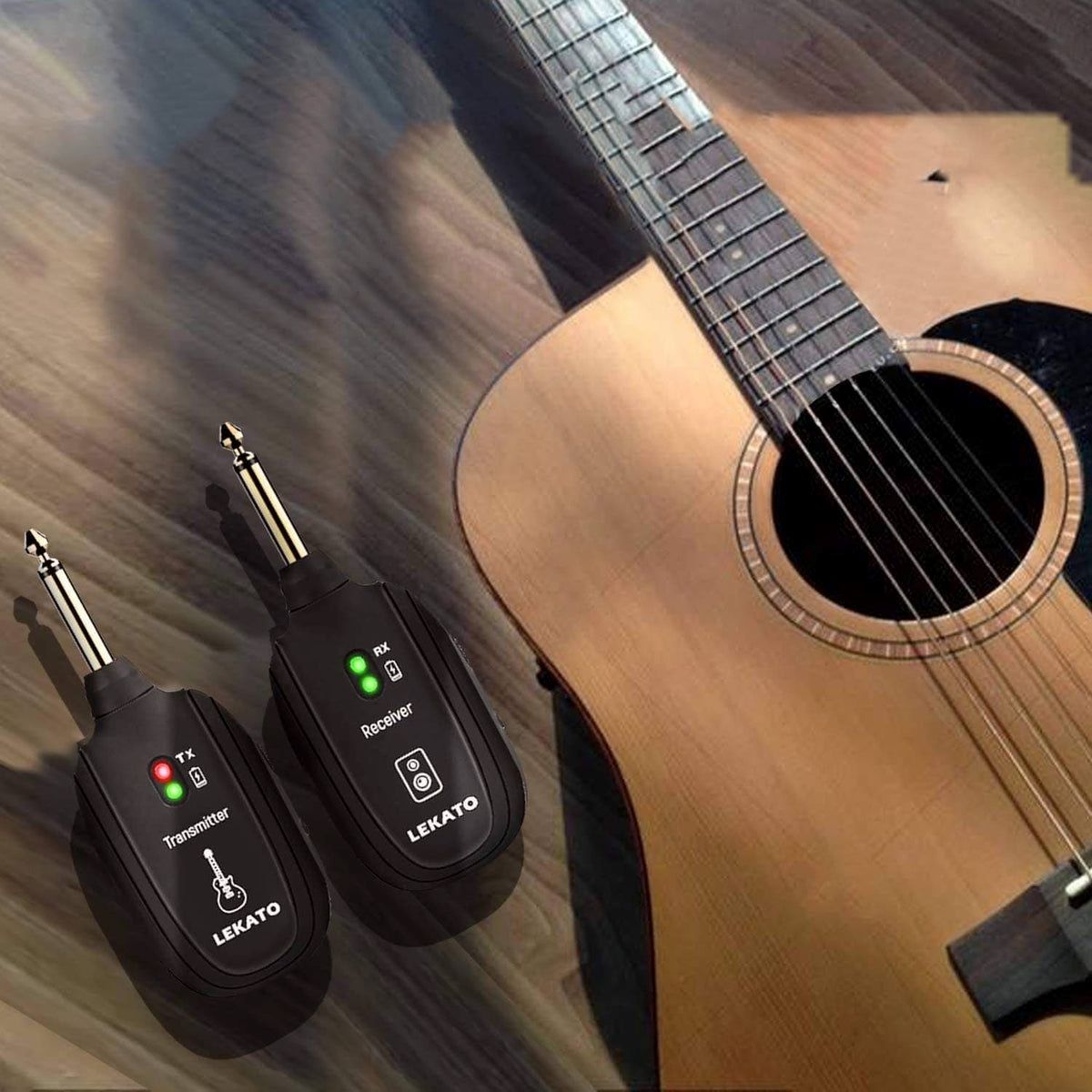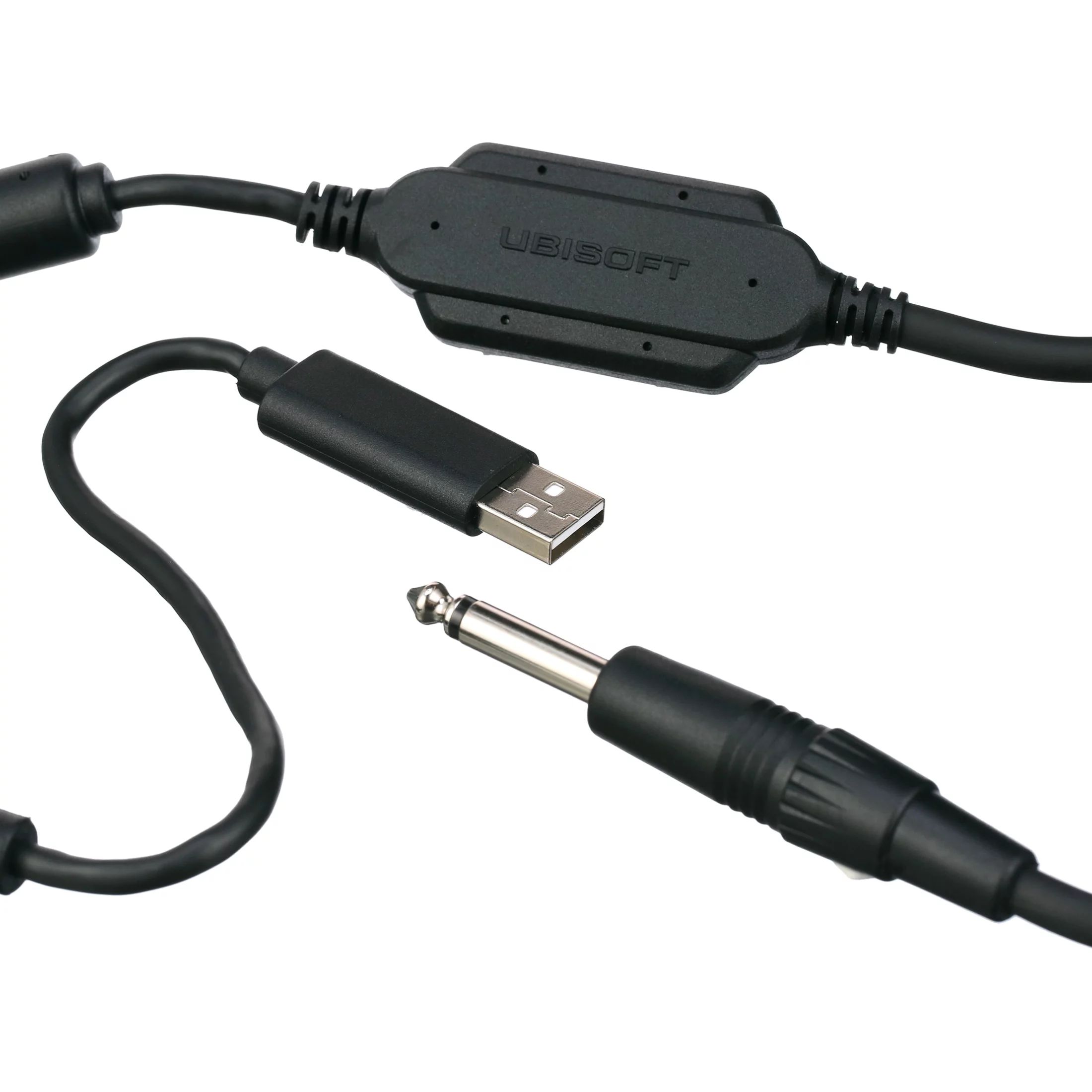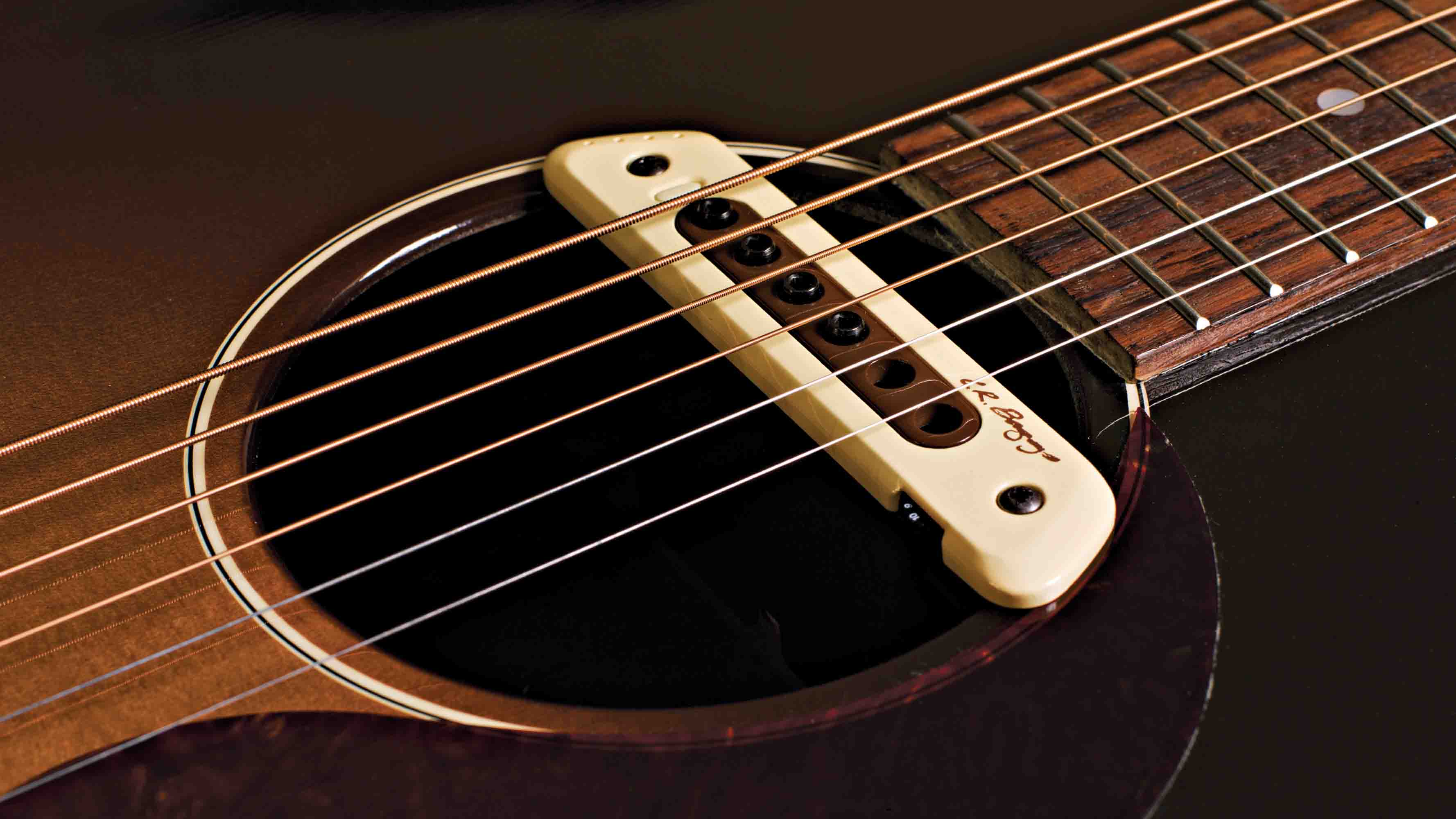Introduction
An electric guitar is a mesmerizing instrument that has captivated music enthusiasts for decades. It is a versatile and iconic tool that has played a pivotal role in shaping the landscape of modern music. With its sleek design and electrifying sound, the electric guitar stands as a symbol of artistic expression and technical prowess. Whether you are a seasoned musician or an aspiring beginner, understanding the components and features of an electric guitar is essential for mastering this instrument.
In this comprehensive guide, we will delve into the intricate details of what an electric guitar looks like, exploring its various components and their functions. From the body to the headstock, pickups to the tuning pegs, each element contributes to the instrument's unique sound and playability. By gaining insight into the anatomy of an electric guitar, you will develop a deeper appreciation for its craftsmanship and understand how each part contributes to its sonic capabilities.
Join us on this journey as we unravel the mystique of the electric guitar, uncovering its design, components, and the magic that happens when it's in the hands of a skilled musician. Whether you're a curious enthusiast or an aspiring player, this guide will provide a comprehensive understanding of what makes an electric guitar a timeless icon in the world of music. So, let's embark on this exploration and unravel the secrets of the electric guitar's captivating allure.
The Body
The body of an electric guitar is a defining feature that contributes to its visual appeal and tonal characteristics. Typically crafted from wood, the body plays a crucial role in shaping the instrument’s resonance and overall sound. Electric guitar bodies come in various shapes and styles, each offering distinct tonal qualities and ergonomic benefits. Common body shapes include the iconic Stratocaster, timeless Les Paul, and versatile Telecaster, among others.
These body shapes not only serve as aesthetic statements but also influence the guitar’s weight distribution and playability. The contours and curves of the body are designed to provide comfort and accessibility for the player, allowing for seamless movement along the fretboard. Additionally, the body often features a cutaway design, enabling easy access to the higher frets for lead guitar playing.
Furthermore, the body of an electric guitar accommodates other essential components, such as the pickups, bridge, and controls. These elements are strategically integrated into the body, contributing to the instrument’s overall functionality and aesthetic appeal. The body’s finish, whether glossy or matte, adds a visual dimension to the guitar, reflecting light and showcasing the natural beauty of the wood grain.
As a centerpiece of the electric guitar, the body serves as a canvas for artistic expression, with custom paint jobs, intricate designs, and ornate engravings adding a personalized touch to each instrument. Whether it’s the sleek curves of a modern superstrat or the timeless elegance of a vintage semi-hollow body, the body of an electric guitar is a defining characteristic that sets the stage for musical creativity and sonic exploration.
The Neck
One of the most crucial components of an electric guitar is the neck, which serves as the primary interface for the player’s interaction with the instrument. Typically crafted from sturdy yet resonant wood, such as maple or mahogany, the neck plays a pivotal role in determining the guitar’s playability, stability, and tonal characteristics.
The neck of an electric guitar features frets, which are metal strips embedded into the fingerboard at precise intervals. These frets divide the neck into distinct musical intervals, allowing the player to produce different notes and chords with accuracy. The number of frets can vary, with standard electric guitars typically featuring 21 to 24 frets, while extended-range guitars may have up to 27 or more frets, enabling access to a broader tonal range.
Furthermore, the neck’s profile, or shape, significantly influences the player’s grip and comfort. Common neck profiles include “C,” “V,” and “U” shapes, each offering a unique feel and facilitating different playing styles. Additionally, the neck may feature inlays, which are decorative markers on the fingerboard that help the player orient themselves along the neck and identify specific fret positions.
Another critical aspect of the neck is the truss rod, a metal rod embedded within it to provide structural support and allow for adjustments to the neck’s curvature. This feature is essential for maintaining the guitar’s optimal playability by counteracting the tension exerted by the strings and environmental factors, such as humidity and temperature changes.
Whether it’s the smooth, fast-playing feel of a sleek, modern neck or the vintage charm of a chunky, “baseball bat” profile, the neck of an electric guitar is a fundamental element that directly influences the player’s connection with the instrument. Its design, construction, and ergonomic considerations all contribute to the overall performance and feel of the guitar, making it a crucial aspect of the instrument’s allure and functionality.
The Headstock
The headstock of an electric guitar is a distinctive feature that not only contributes to the instrument’s aesthetic appeal but also plays a crucial role in tuning stability and string tension. Positioned at the end of the guitar’s neck, the headstock houses the tuning pegs, which are used to adjust the tension of the strings, thereby determining the pitch of each string.
Electric guitar headstocks come in various shapes and designs, ranging from the iconic 6-in-line configuration, as seen on many Fender models, to the 3×3 arrangement commonly found on Gibson guitars. Additionally, headstocks may feature decorative elements, such as intricate inlays, brand logos, or ornate designs, adding a personalized touch and visual flair to the instrument.
Furthermore, the angle of the headstock, in conjunction with the nut, contributes to the string tension and overall resonance of the guitar. A well-constructed headstock design ensures that the strings maintain consistent tension, thereby enhancing tuning stability and minimizing the risk of string slippage during performance.
In addition to its functional aspects, the headstock serves as a canvas for artistic expression, with custom paint jobs, unique finishes, and signature designs showcasing the individuality of the instrument. Whether it’s the timeless elegance of a traditional headstock shape or the innovative, avant-garde designs of modern luthiers, the headstock adds character and personality to the electric guitar.
Moreover, the headstock often bears the guitar’s brand name or logo, serving as a symbol of craftsmanship and quality. This visual insignia not only represents the instrument’s heritage and lineage but also signifies the reputation and legacy of the guitar maker, adding a sense of pride and identity to the instrument.
Ultimately, the headstock of an electric guitar is a focal point that combines functionality, aesthetics, and brand representation. Its design, shape, and adornments contribute to the instrument’s overall visual appeal and performance, making it an integral part of the electric guitar’s allure and identity.
The Pickups
At the heart of an electric guitar’s sonic character lie the pickups, which are integral components responsible for capturing the vibrations of the strings and converting them into electrical signals. These signals are then amplified and shaped to produce the distinctive tones that define the instrument’s voice. Electric guitar pickups come in various types, each offering unique tonal characteristics and sonic versatility.
The most common types of pickups found on electric guitars are single-coil and humbucker pickups. Single-coil pickups, known for their bright and articulate sound, are composed of a single coil of wire wrapped around magnets. They deliver a clear, crisp tone and are favored for their ability to convey intricate nuances in playing dynamics.
On the other hand, humbucker pickups, comprised of two coils wound in opposite directions, are renowned for their warm, thick sound and noise-cancelling properties. They excel at producing rich, creamy overdriven tones and are favored in genres such as rock and blues for their powerful, punchy sound.
Additionally, electric guitar pickups may feature unique configurations, such as P-90 pickups, which offer a middle ground between single-coil and humbucker tonal characteristics, combining the clarity of single coils with the warmth of humbuckers. Furthermore, active pickups, powered by a preamp, provide higher output and extended tonal shaping capabilities, making them suitable for genres that demand high-gain and precise EQ adjustments.
Moreover, the placement of pickups on the guitar’s body significantly influences the instrument’s tonal palette. Bridge pickups, positioned near the bridge, offer a bright, cutting sound ideal for lead playing, while neck pickups, located near the neck, produce a warm, rounded tone, perfect for expressive solos and smooth rhythm playing. Some guitars also feature middle pickups, providing a balanced, versatile sound that complements various playing styles.
Ultimately, the pickups of an electric guitar are pivotal in shaping its sonic identity, offering a diverse range of tonal possibilities and expressive capabilities. Their design, construction, and placement on the guitar contribute to the instrument’s overall voice, making them essential components in the art of crafting and defining the electric guitar’s captivating sound.
The Bridge
The bridge of an electric guitar is a critical component that not only anchors and supports the strings but also plays a significant role in shaping the instrument’s tone, sustain, and intonation. Positioned on the body of the guitar, the bridge serves as a point of contact for the strings, transmitting their vibrations to the body and ultimately to the pickups, where they are captured and amplified.
Electric guitar bridges come in various designs, each offering distinct functionality and tonal characteristics. Common types of bridges include the traditional fixed bridge, which provides stability and straightforward string setup, and the tremolo bridge, also known as a vibrato bridge, which allows for pitch modulation by enabling the player to raise or lower the pitch of the strings.
Furthermore, some electric guitars feature innovative bridge designs, such as the tune-o-matic bridge, which offers individual string intonation adjustments for precise tuning across the fretboard. This feature is particularly valuable for ensuring that each string produces accurate pitch when fretted at different positions, contributing to overall playability and tonal clarity.
Additionally, the material composition of the bridge, whether it’s made of steel, aluminum, or other alloys, can significantly impact the guitar’s sustain, resonance, and tonal characteristics. A well-crafted bridge contributes to the instrument’s overall sonic performance by efficiently transferring string vibrations to the body, resulting in rich, dynamic tones.
Moreover, the bridge of an electric guitar may feature fine-tuning mechanisms, such as locking nuts or saddle adjustments, which enable precise string height and intonation adjustments. These features are essential for achieving optimal playability and tonal accuracy, especially in demanding playing scenarios such as studio recording or live performances.
Ultimately, the bridge of an electric guitar is a fundamental element that influences the instrument’s playability, tonal response, and expressive capabilities. Its design, construction, and functionality play a pivotal role in shaping the guitar’s sonic identity, making it an indispensable component in the art of crafting and defining the electric guitar’s captivating sound.
The Controls
The controls of an electric guitar encompass a set of knobs, switches, and input mechanisms that allow the player to manipulate the instrument’s tonal characteristics and sonic capabilities. Positioned on the guitar’s body, these controls serve as a gateway to a diverse range of sounds, offering the player the ability to sculpt their desired tones with precision and nuance.
Common electric guitar control configurations include volume and tone knobs, which are typically located near the instrument’s pickups and bridge. The volume knob regulates the output level of the guitar, allowing the player to adjust the instrument’s overall loudness and dynamic range. On the other hand, the tone knob enables the player to shape the timbre of the guitar’s sound, providing control over the instrument’s brightness and warmth.
Furthermore, some electric guitars feature pickup selector switches, which allow the player to choose between different pickup configurations, such as bridge, middle, and neck pickups, offering a versatile palette of tonal options. These switches enable seamless transitions between various pickup combinations, catering to different playing styles and musical genres.
Moreover, modern electric guitars may incorporate advanced electronic controls, such as coil-splitting switches, phase reversal switches, or active EQ circuits, providing expanded tonal versatility and sonic exploration. These features empower the player to unlock a wide array of tonal possibilities, from sparkling clean tones to searing lead sounds, enhancing the instrument’s expressive capabilities.
Additionally, the layout and design of the controls are carefully engineered to ensure intuitive operation and ergonomic accessibility, allowing the player to make real-time adjustments to their sound without interrupting their performance. The tactile response and functionality of the controls contribute to the instrument’s playability and user experience, enhancing the player’s ability to shape their sonic identity.
Ultimately, the controls of an electric guitar are essential tools that empower the player to shape and mold their sonic expression. Their intuitive design, functionality, and sonic versatility make them indispensable components in the art of crafting and defining the electric guitar’s captivating sound.
The Input Jack
The input jack of an electric guitar serves as the gateway for connecting the instrument to an amplifier or other audio equipment, allowing the electrical signals generated by the pickups to be transmitted and amplified. Positioned on the guitar’s body, the input jack provides a secure and reliable connection, ensuring that the instrument’s signal is efficiently transferred to external audio devices.
Electric guitar input jacks come in two primary configurations: mono and stereo. The mono jack, the most common type, features a single connector, transmitting the combined signals from the guitar’s pickups to the amplifier. On the other hand, stereo jacks, less common but found on certain electric guitars, offer the capability to separate the signals from different pickups or internal electronics, providing enhanced tonal routing and signal processing options.
Furthermore, the input jack’s construction and durability are paramount, as it must withstand the rigors of frequent plugging and unplugging without compromising its electrical connections. A well-constructed input jack ensures a stable and reliable connection, minimizing signal loss and unwanted noise, thereby preserving the integrity of the guitar’s sonic output.
Moreover, the input jack may feature additional functionalities, such as built-in locking mechanisms or switch contacts, designed to enhance the instrument’s connectivity and user experience. These features provide added security and convenience, ensuring that the cable remains firmly connected during performances and recording sessions.
Additionally, the input jack’s placement on the guitar’s body is carefully considered to facilitate easy access and ergonomic functionality. Its strategic positioning allows for seamless connection and disconnection of the instrument, enabling the player to transition effortlessly between different guitars or audio setups without interruption.
Ultimately, the input jack of an electric guitar is a fundamental component that facilitates the instrument’s connection to external audio equipment, ensuring that the guitar’s sonic signals are faithfully transmitted and amplified. Its design, construction, and functionality play a crucial role in preserving the integrity of the instrument’s sound, making it an essential element in the art of crafting and defining the electric guitar’s captivating sonic presence.
The Strings
The strings of an electric guitar are the vital conduits of sound, serving as the primary source of vibration that generates the instrument’s melodic and harmonic content. These taut, slender metal wires are responsible for producing the resonant tones and expressive nuances that define the electric guitar’s sonic identity. Understanding the composition, gauge, and maintenance of these strings is essential for achieving optimal playability and tonal quality.
Electric guitar strings are typically constructed from various materials, with steel and nickel being the most common choices. The composition of the strings significantly influences their tonal characteristics, with steel strings offering bright, articulate tones, while nickel strings provide a warmer, more balanced sound. Additionally, string coatings, such as polymer or metal alloys, can enhance durability and prolong the strings’ lifespan, reducing the accumulation of dirt and corrosion.
Furthermore, the gauge, or thickness, of the strings plays a crucial role in determining the instrument’s playability and tonal response. Lighter gauge strings offer ease of play, facilitating agile fretting and bending, while heavier gauge strings produce a fuller, more robust sound with increased sustain and resonance. The choice of string gauge is often a matter of personal preference, influenced by playing style, musical genre, and tonal requirements.
Moreover, the condition and maintenance of the strings are paramount for preserving the instrument’s tonal integrity and playability. Regular cleaning and string replacement ensure that the strings retain their clarity, sustain, and responsiveness, preventing the accumulation of grime and corrosion that can diminish their sonic quality.
Additionally, the string height, or action, significantly impacts the playability and comfort of the instrument. Properly adjusted string height allows for smooth fretting and effortless chord transitions, contributing to the overall ease of playing and fretboard navigation.
Ultimately, the strings of an electric guitar are the lifeblood of its sonic expression, shaping the instrument’s tonal palette and playability. Their composition, gauge, and maintenance are crucial considerations for achieving optimal sound and performance, making them essential components in the art of crafting and defining the electric guitar’s captivating sonic presence.
The Tuning Pegs
The tuning pegs, also known as machine heads or tuning machines, are fundamental components of an electric guitar, serving as the means to adjust the tension and pitch of the instrument’s strings. Positioned on the headstock, these precision mechanisms allow the player to achieve accurate tuning, ensuring that the guitar produces the desired pitches and maintains stable intonation during performance and practice.
Electric guitar tuning pegs come in various designs and configurations, each offering unique functionality and aesthetic appeal. Common types include open-gear tuners, enclosed tuners, and locking tuners, with each type providing distinct advantages in terms of tuning stability, string retention, and ease of use.
Furthermore, the gear ratio of the tuning pegs determines the precision and sensitivity of tuning adjustments. High gear ratios offer finer control over string tension, allowing for precise tuning, while lower gear ratios provide faster string winding for rapid restringing and maintenance.
Moreover, the material composition of the tuning pegs, whether they are made of steel, aluminum, or other alloys, impacts their durability, weight, and aesthetic appeal. Well-crafted tuning pegs contribute to the instrument’s overall balance, playability, and visual presentation, making them essential components in the art of crafting and defining the electric guitar’s captivating sonic presence.
Additionally, the ergonomic design and functionality of the tuning pegs are crucial for facilitating smooth, accurate tuning adjustments. The tactile response and ease of operation ensure that the player can achieve precise tuning with minimal effort, enhancing the overall user experience and playability of the instrument.
Ultimately, the tuning pegs of an electric guitar are essential tools that enable the player to achieve accurate tuning and maintain stable intonation, ensuring that the instrument produces consistent, harmonious tones. Their design, construction, and functionality play a pivotal role in shaping the guitar’s sonic identity, making them indispensable components in the art of crafting and defining the electric guitar’s captivating sound.
Conclusion
Exploring the intricate components of an electric guitar reveals the meticulous craftsmanship and engineering that contribute to its captivating sonic and visual appeal. From the body to the tuning pegs, each element plays a vital role in shaping the instrument’s tonal characteristics, playability, and aesthetic presence. Understanding the anatomy of an electric guitar provides valuable insight into the artistry and innovation that define this iconic instrument.
By delving into the nuances of the body, neck, headstock, pickups, bridge, controls, input jack, strings, and tuning pegs, we gain a deeper appreciation for the meticulous design and functionality that underpin the electric guitar’s allure. The body’s ergonomic contours, the neck’s fretted precision, the headstock’s tuning stability, the pickups’ tonal versatility, the bridge’s resonance, the controls’ sonic sculpting, the input jack’s connectivity, the strings’ vibrancy, and the tuning pegs’ precision collectively contribute to the instrument’s dynamic sonic palette and expressive capabilities.
Furthermore, the artful integration of these components reflects the collaborative efforts of luthiers, engineers, and designers who strive to push the boundaries of sonic innovation and craftsmanship. The electric guitar stands as a testament to human creativity and ingenuity, transcending its functional purpose to become a symbol of artistic expression and cultural significance.
As players and enthusiasts continue to explore the sonic possibilities and artistic potential of the electric guitar, the appreciation for its intricate components and timeless design only grows. Whether in the hands of a seasoned virtuoso or an aspiring musician, the electric guitar’s allure remains undiminished, offering a boundless realm of sonic exploration and creative expression.
Ultimately, the electric guitar’s enduring legacy and timeless appeal are a testament to the harmonious synergy of art and engineering, where form and function converge to create an instrument that continues to inspire and captivate generations of music lovers worldwide.







